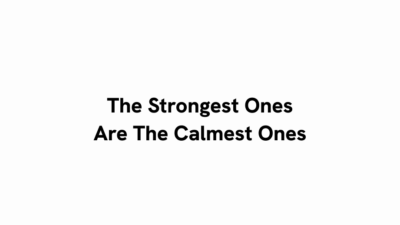Innovation is often portrayed as groundbreaking, futuristic, and entirely novel. But history tells a different story. Many of the world’s most impactful innovations weren’t created from scratch—they were rediscoveries, adaptations, or refinements of existing ideas.
True innovation doesn’t have to be about inventing the next big thing. It’s about reimagining timeless principles and applying them to solve modern problems. By looking to the past, we can find inspiration for the future.
In this article, we’ll explore how rediscovering timeless ideas can fuel innovation and provide actionable strategies to apply these concepts to your own business or creative work.
What Makes an Idea Timeless?
A timeless idea solves a universal problem or fulfills a fundamental human need. These concepts are adaptable, scalable, and resilient across generations.
For example:
- The sharing economy (popularized by Airbnb and Uber) isn’t new. It echoes traditional practices of bartering, ride-sharing, and community lodging.
- Storytelling, one of humanity’s oldest forms of communication, is still a cornerstone of marketing and branding today.
Timeless ideas endure because they tap into basic truths about human behavior and societal needs.
Why Rediscovering Timeless Ideas Drives Innovation
1. Timeless Ideas Are Proven
Timeless ideas come with a track record. They’ve worked in the past, often under different circumstances, and can serve as a foundation for new applications.
Example:
The subscription model, now popularized by companies like Netflix and Spotify, is a modern take on magazine and newspaper subscriptions that have existed for centuries.
2. Timeless Ideas Reduce Risk
Because timeless ideas are rooted in proven principles, they offer a safer starting point for innovation. You’re not starting from zero—you’re building on what already works.
Example:
E-commerce platforms like Etsy leverage the age-old concept of marketplaces, now scaled for a global audience through technology.
3. Timeless Ideas Inspire Creativity
Adapting a historical concept to a modern problem requires creative thinking. The process of bridging past and present sparks new ways of approaching challenges.
Example:
Farm-to-table restaurants reintroduced the ancient practice of local sourcing in a way that aligns with modern sustainability trends.
How to Rediscover Timeless Ideas
1. Look to History for Inspiration
Many modern problems have historical parallels. Exploring how people solved similar challenges in the past can reveal ideas worth adapting today.
Action Step:
Research your industry’s history or explore case studies from unrelated fields. Ask: What challenges did they face, and how did they solve them?
2. Simplify Instead of Reinventing
Innovation doesn’t always mean adding more—it often means refining and simplifying. Timeless ideas endure because they address needs in a clear, elegant way.
Action Step:
Audit your product or process and identify areas where you can remove complexity to deliver more value.
3. Combine the Old with the New
The most powerful innovations often come from merging traditional practices with modern tools or technologies.
Action Step:
Identify one traditional concept in your industry and brainstorm how technology could enhance or scale it.
Example:
Duolingo transformed traditional language learning methods (like flashcards) into a gamified, tech-driven platform that makes learning accessible to millions.
Examples of Timeless Ideas in Modern Innovation
- Community Lodging
- Timeless Idea: Hospitality through shared spaces (e.g., inns, guesthouses).
- Modern Innovation: Airbnb connects travelers with hosts, enabling a global network of shared accommodations.
- Bartering and Trading
- Timeless Idea: Trading goods or services without money.
- Modern Innovation: Platforms like TaskRabbit and Fiverr modernize this concept by enabling skill-sharing and gig work.
- Storytelling for Influence
- Timeless Idea: Sharing compelling narratives to engage audiences.
- Modern Innovation: Social media influencers and brands use storytelling to build trust and connect with their audiences.
Modern Tools to Rediscover and Adapt Timeless Ideas
- Research Tools:
- Google Scholar: Access historical papers and studies for inspiration.
- The Internet Archive: Explore old books, publications, and records for timeless concepts.
- Creative Platforms:
- Miro: Brainstorm and map out ways to adapt traditional ideas for modern use.
- Notion: Organize historical research and innovation frameworks.
- Collaboration Tools:
- Slack: Facilitate discussions about blending past and present ideas with your team.
- Figma: Prototype concepts that merge timeless ideas with modern designs.
Practical Applications for Innovating with Timeless Ideas
- Conduct a Historical Audit:
Research how similar challenges were solved in the past, whether in your industry or another. - Host a Brainstorming Session:
Bring your team together to explore how timeless ideas can be adapted to modern challenges. - Prototype and Test:
Use tools like Canva or Figma to create a quick prototype of your adapted concept and gather feedback from your audience.
Reflection Prompt
What timeless ideas resonate with your work or industry? How can you adapt them to solve modern problems?
Closing Thoughts: The Timeless Path to Innovation
True innovation isn’t about chasing the new—it’s about reimagining what’s already proven. By rediscovering timeless ideas, you can build solutions that resonate deeply with your audience, reduce risks, and create enduring value.
The next big breakthrough may not come from a completely novel idea but from the creative reimagining of a timeless one.
As you look to innovate, don’t just ask, What’s new? Ask, What’s worth rediscovering?



